Learning to Be Old
Praise for Previous Editions
One of [the books] strengths is its weaving of themes from different fields and disciplines.... Another is in presentationit is informative, lively, and well researched. Journal of Women & Aging
The major contribution may be her analysis of the potential negative effects of womens family roles and her suspicion that grandmothers are being exploited. This book... raises a number of important questions. Journal of Marriage and Family
In her excellent book, Learning to Be Old , Margaret Cruikshank compares the aged to a colonized people, suggesting that ageism goes beyond dehumanization into actual scapegoating of the old. The New York Times
This text is such a gem that it is tempting to quote from it non-stop. Canadian Womens Studies
Learning to Be Old is a nice text for both the graduate and undergraduate levels, either in courses on the sociology of aging or in womens studies courses to provide a feminist perspective on aging. The Gerontologist
Compressing a significant amount of important information on issues of race, gender, social class, economics, and ethnicity, Cruikshank has created a readable book on the general theme of gerontology. The current research, theories, and practices outlined by Cruikshank will give readers of all ages insights into learning to be old. An extensive bibliography is provided for further study. Essential. CHOICE
Sheds light on a particular bias inherent in studying this countrys burgeoning aging population and asks why unlike gender, race, and sexual orientationidentities that have been reinterpreted as socially constructed phenomenaaging is still seen through physically constructed lenses. Tucson Weekly
A valuable book on aging. Scholarly and well-documented. The Senior Times
Learning to Be Old
Gender, Culture, and Aging
Third Edition
Margaret Cruikshank
Rowman & Littlefield Publishers, Inc.
Lanham Boulder New York Toronto Plymouth, UK
Published by Rowman & Littlefield Publishers, Inc.
A wholly owned subsidiary of The Rowman & Littlefield Publishing Group, Inc.
4501 Forbes Boulevard, Suite 200, Lanham, Maryland 20706
www.rowman.com
10 Thornbury Road, Plymouth PL6 7PP, United Kingdom
Copyright 2013 by Rowman & Littlefield Publishers, Inc.
All rights reserved . No part of this book may be reproduced in any form or by any electronic or mechanical means, including information storage and retrieval systems, without written permission from the publisher, except by a reviewer who may quote passages in a review.
British Library Cataloguing in Publication Information Available
Library of Congress Cataloging-in-Publication Data
Cruikshank, Margaret.
Learning to be old : gender, culture, and aging / Margaret Cruikshank. 3rd ed.
p. ; cm.
Includes bibliographical references and index.
ISBN 978-1-4422-1364-7 (cloth : alk. paper) ISBN 978-1-4422-1365-4 (pbk. : alk. paper) ISBN 978-1-4422-1366-1 (electronic)
I. Title.
[DNLM: 1. AgingpsychologyUnited States. 2. AgedUnited States. 3. AgingphysiologyUnited States. 4. Sex FactorsUnited States. 5. Social ValuesUnited States. 6. Socioeconomic FactorsUnited States. WT 145]
305.26dc23
2012043505
 The paper used in this publication meets the minimum requirements of American National Standard for Information SciencesPermanence of Paper for Printed Library Materials, ANSI/NISO Z39.48-1992.
The paper used in this publication meets the minimum requirements of American National Standard for Information SciencesPermanence of Paper for Printed Library Materials, ANSI/NISO Z39.48-1992.
Printed in the United States of America
For Donna
Contents
Preface
Perhaps, with full life-spans the norm, people may need to learn how to be aged as they once had to learn to be adult.
Ronald Blythe, The View in Winter
Two ideas run through this book. The first is that aging in North America is shaped more by culture than biology, more by beliefs, customs, and traditions than by bodily changes. In other words, it is socially constructed. The second is that awareness of social constructions and resistance to them is crucial for womens comfortable aging.
Nevertheless, our aging bodies matter greatly. No matter how clearly we understand the complex and interconnecting forces of social aging, we age in our individual bodies.
Sometimes chronological age holds great significance and sometimes it does not.
Accepting this fact is an important part of learning to be old. Equally important is a willingness to imagine what aging would be like if we could free ourselves, even partially, from negative beliefs about it and if social policy favored healthy aging.
My title has two meanings. First, aging in contemporary North America is so multidimensional that studying it is worthwhile, even necessary, for those who wish to do it consciously and without fear. Second, learning to be old means unlearning much of what we think is true. The misconceptions about agingthat decline and loss are its central features, for examplewill have less power to limit our experience if we can examine them critically. Entering the third (or fourth) stage of life with no preparation or forethought would perhaps not be dangerous in a society organized for the well-being of its oldest members. In our market economy, however, mindless aging leaves us vulnerable to many forms of exploitation. This is especially true for women.
Learning to Be Old falls somewhere in the large space between practical guides to aging and theoretical work. I have attempted to bring together matters usually treated separately: health, politics, the humanities, feminist gerontology, and cultural analysis. At the same time, I have not taken up except in passing some topics important to womens aging such as housing, transportation, Medicare, and nursing homes.
My motive for writing this book is the belief that neither womens studies nor gerontology has come to grips with the fact that old means women. Learning to Be Old is but one response to the remarkable and unremarkable longevity of women.
Womens aging is like the Chinese ideogram that means both danger and opportunity.
I agree with British philosopher Helen Small: One of the problems with and for old age is that, while there has been too little serious thinking about it over the years, there have been quite enough pronouncements ( The Long Life , 265). Learning to Be Old modestly offers serious thinking about late life.
As in the second edition, the phrase the elderly is no longer used because it suggests a uniform group, counter to the books assumption that elderly persons are extremely diverse.
In the third edition, the last two chapters are reorganized: humanistic gerontology and critical gerontology are now in chapter 9, with a new title, Countercultural Gerontology. New material has been added on Alzheimers disease, the brain, mind-body connections, narrative gerontology, and the feminist concept of intersectionality. Research published since 2010 has been summarized throughout.
Earlier, I referred to natural aging as if that were a self-evident contrast to drugged aging, irrational fear of an aging population, or acceptance of the paradigm of loss for old age. Now it seems that whatever appears natural about aging may also be socially constructed. To age naturally, would I not have to avoid not only Botox but moisturizing creams, vitamins, immune system boosters such as cranberry or blueberry juice, and physical therapy, and are not these aids emblems of a particular time and culture? If our grandparents at fifty were encumbered by the stiffness and joint pain that some do not today experience until their seventies or eighties, whose aging is more natural?
Geropsychiatrist Gene Cohen wrote that with age can come a new feeling of inner freedom, self-confidence, and liberation from social constraints that allows for novel or bold behavior (Creativity, 195). This may be especially true for women.

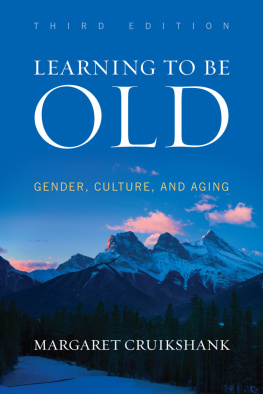

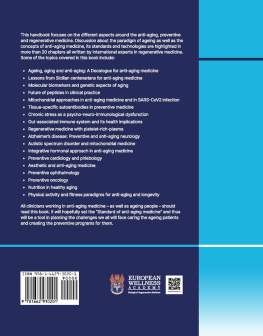


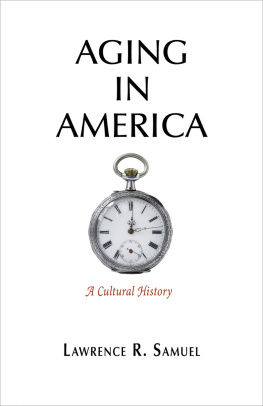
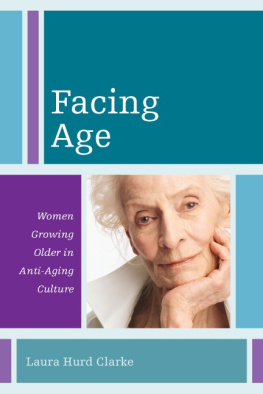
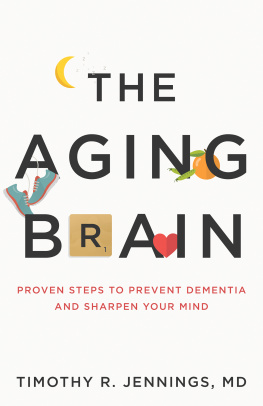

 The paper used in this publication meets the minimum requirements of American National Standard for Information SciencesPermanence of Paper for Printed Library Materials, ANSI/NISO Z39.48-1992.
The paper used in this publication meets the minimum requirements of American National Standard for Information SciencesPermanence of Paper for Printed Library Materials, ANSI/NISO Z39.48-1992.